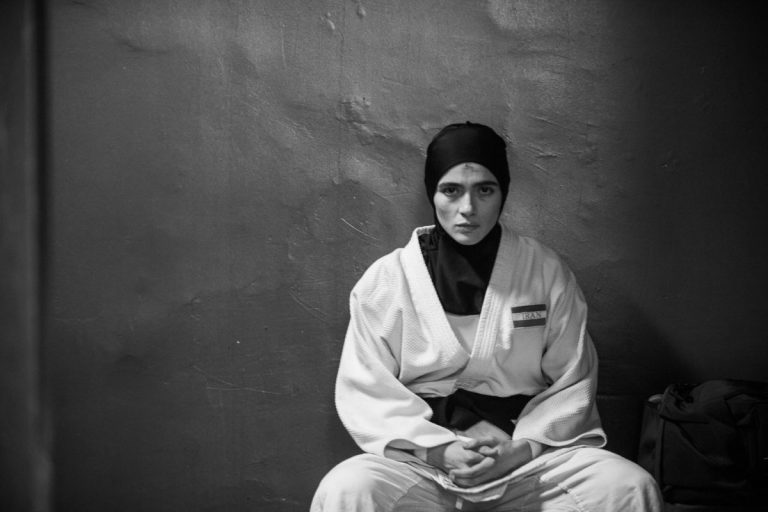“Double XL,” released in 2022, is a relatable and light-hearted story that unfurls how the real and reel lives assess people on the basis of their physical outlook. The importance of female friendship, humane assets, the journey of self-discovery, an empathetic attitude, and mastering the mysteries of the unfair world is narrated endearingly, injecting an ample dose of body positivity by the director, Satram Ramani.
This is not just the reel life of Saira Khanna and Rajshri Trivedi but the real-life story of many residing within the double XL sizes and double-dashing dreams, yet disconnected from the mainstream and drifted apart to their own body-sized hemispheres of life. Rajshri Trivedi (Huma Qureshi) and Saira Khanna (Sonakshi Sinha) go through similar phases owing to their double size physical appearance. Rajshri Trivedi, a healthy girl hailing from Meerut, aspires to be a sports presenter. Her family, especially her mother, is in pursuit of a suitable boy for her.
Although she tries to get shortlisted for the channel interview, they hire people based on their physical appearance and body weight. The ambitious designer Saira Khanna faces rejection on the work front and in her relationships just because of her body weight. The two double-troubled women happen to come across each other in Delhi and realize the fact that they can be of mutual help in some ways.
Saira desperately needs a director for a fashion shoot in London for which Rajshri is qualified. Seeing the reels made by Rajshri, Saira feels she is capable of her requirements. Rajshri wants to escape from the matrimony queries and findings, so she joins Saira for her London mission. Along the way, they befriend two interesting boys who understand and stand by them despite the societal concerns about body mass and external outlook. Rajshri is attracted to a budding cinematographer, Shrikant (Mahat Raghavendra).
Shrikant remains a source of inspiration and encouragement for her to follow and achieve her dream despite all the disturbing thoughts on body weight. When she is on the verge of giving up her dream, Zorawar Rahmani ( played by Zaheer Ikbal), nicknamed Zo/Za/Zu, a line producer, also helps them materialize their dreams. Rajshri gets a chance to interview Kapildev and gets her dream job as a sports presenter. Saira also becomes successful by starting her own brand that fits all size people.
Body shaming has become a part and parcel of real as well as digital life. Society is driven by the external ‘zero size’ appearance, flaunting thin body shapes in fashion shows, movies, and gatherings. People are profoundly shamed on the grounds of their skin color, body mass index, height, and dress code. “Double XL” manifests body shaming on many occasions, highlighting the undue significance society has attributed to body weight.
The movie’s opening scene shows Rajshri lying in bed, dreaming of a fancy fete. She is asked by the cricket star Shikhar Dhawan to dance with him. Her dream is interrupted by the crackling voice of her mother demanding her to wake up. Her mother somehow wants to fix her marriage and suggests she do some cardio to impress the guy and his parents. Rajshri is pretty sure that marriage is not her primary aim, and she is not ready at this juncture.
She proves the suitable matches brought by her mother are the most unsuitable ones for her. The movie shows her interaction with her prospective bridegroom over a cup of tea and a piece of Kachori. The guy, Tito, feels she is extra healthy and can’t be a better match for him. Rajshri clarifies that she is overweight and he is underweight.
When she expresses her yearning to become a sports presenter, Tito enlightens her by saying that she must lose weight because the rest of the world is an idiot like him. Rajshri does not come under the standard body image society has attributed to the female personas in order to be assessed by the male gaze. Rajshri’s dignity is humiliated by his comment. It does not demotivate her from chasing her long-cherished desire to become a sports presenter.
Saira Khanna from Delhi, born in London, is an aspiring fashion designer. Her passion for fashion makes her argue and fight with people even on the subtle mistakes in the size of clothes. Her lip ring and green streaks never give her a chance to escape from the eyes, visually gazing at her non-zero-sized image. She even teaches the storekeeper about the size and variety of clothes. Things take a different turn when Saira gets to know that a company is interested in investing in her journey to begin her own fashion brand.
Saira shares this with her flirty boyfriend, who considers her as a means of money and sex. She is a piece of an oversized mattress in the view of Viren’s friends. Moreover, Viren is in a relationship with another lady while courting Saira. She catches him red-handedly. A dejected Saira takes time to come out of the worthless relationship. In the heat of the moment, she accepts the company’s offer and befriends Rajshri. Their passion and bigger dreams in the bigger bodies slowly and steadily establish an impeccable bond with each other. Both of them have emerged triumphant in the way they wanted to become, not by mending them to the demands of society.

Rajshri is not chosen as a sportscaster just because of her body size; many are selected for open auditions because of their thin appearance. Even if they are not talented, their external appearance is capable of masking them. The definition of beauty carries a toll on the lives of many who don’t even know the reason behind their obese or skinny appearance. Life takes a different turn for Rajshri and Saira in London. Rajshri gets a chance to meet and interview Kapil Dev. He appreciates her talent.
The definition of standard and quality is determined by the hotness and skin fit image established by some standards guys. In childhood also, these people face the same issue of identity crisis. The vicious cycle of body shaming weighs down some people. In the film, Saira says, “I am fat, and I still look hotter than you girls, and I can be a designer, sports presenter, Doctor, CEO, Lawyer, or Actor. I will be whole over. I want to be and still be obese because you don’t feed me”.
Saira is more confident than others as she is least bothered by her body and societal concerns. Through Saira’s words, Rajshri also tries to be confident. They both order food items and say that ‘food is their best friend ‘. In an instant, Saira says that she streaked her hair, pierced her ears, nose, and lips, and got a big tattoo to cover her obesity, but the world only found her obesity. These dialogues from the film exhibit how body weight is given undue prominence to dishearten individuals in society.
Rajshri and Saira talk to the models while sitting in front of a school and see a lot of teachers who are the real role models. But no one makes them models as they don’t meet the so-called body expectations. They try to console each other by saying how food has evolved to be their best friend over time and how they try not to get in tune with society’s perception of body images and Barbie doll figures.
Toys and playthings tend to infuse the feeling of gender and other racial prejudices existing in society. It’s hard to get rid of the societal thinking, but one should strive for it. Unnecessary comparisons often lead to confrontations, and it can even cause anxiety and mental depression. Saira designs clothes for every body type, especially for people criticized for their body size. Her designs become popular, and every body type gets a chance to showcase their talent. The ideal consumer in society is a thin one, and this creates tension in plus-size women. Saira, too, faces the same problem at the outset in the shop as she does not get the dress size matching her.
Saira designs amazing dresses for plus-sized women. Atul Chabra sees Rajshri’s video about interviewing Kapildev, and she bags her dream job as a sports presenter. She tells her mother she has won the bet when she returns home. She mentions that her mother tries to hide her obesity, seeing that as a weakness. Ultimately, the movie portrays a fashion show with Saira’s plus-sized models, including Rajshri. Saira makes a speech in that launch about her life with the double trouble of double size in appearance. She has been fashionable since her days as a kid. As Saira grew older, she learned that she had to change herself for fashion’s sake. The doll she played with was slim, and the cartoon princess she followed was also slim. She starts believing that to look gorgeous or be successful, one has to fit in a size.
These words of Saira ascertain how toys and cartoons influence children and society. For girl children, parents only brought them dolls, especially Barbies. Since its invention in 1959, the Barbie doll has been setting impracticable beauty standards, persuading many young girls worldwide to believe that being 5’9”, weighing about 50 kilos, having F-cup breasts, and sticking thin limbs is the way to go. It’s time to redefine the concept of beauty and Barbie doll appearance.
The film talks in detail about the double-sized body and its challenges. Sonakshi Sinha and Huma Qureshi face body shaming not only in reel lives but also in real lives. Body shaming is a constant evil in all domains across the globe. Movies cater to an audience whose mindset is already imprinted with the idea that ‘slim and tall’ is the perfect body type.
The film acknowledges the importance of health in day-to-day life, and mental peace should not be overlooked. “Double XL” will make one analyze the importance and consideration the present generation bestows upon body weight and physical appearance. Rajshri Trivedi and Saira Khanna undergo a sea of change into ‘something rich and strange’ towards the film’s end. Satram Ramani has succeeded in deciphering the diverse shades of human relations through the subject of body weight. The movie shares a boundless message with an outstanding climax. “Double XL” is fundamentally a story of acceptance.
One must be accepting of one’s family members with the character and outlook they possess. The family members need not aspire for ‘zero size’ or ‘Miss India’ to feel proud of them. A person has to be accepted and acknowledged by the way they are in society. Gender, race, caste, creed, or body size should not clip one’s wings from soaring high in the sky of cherished desires.


![Cut and Chop [2020] Review – There’s no method to this madness](https://79468c92.delivery.rocketcdn.me/wp-content/uploads/2020/11/Cut-and-Chop-highonfilms-1-768x432.png)




